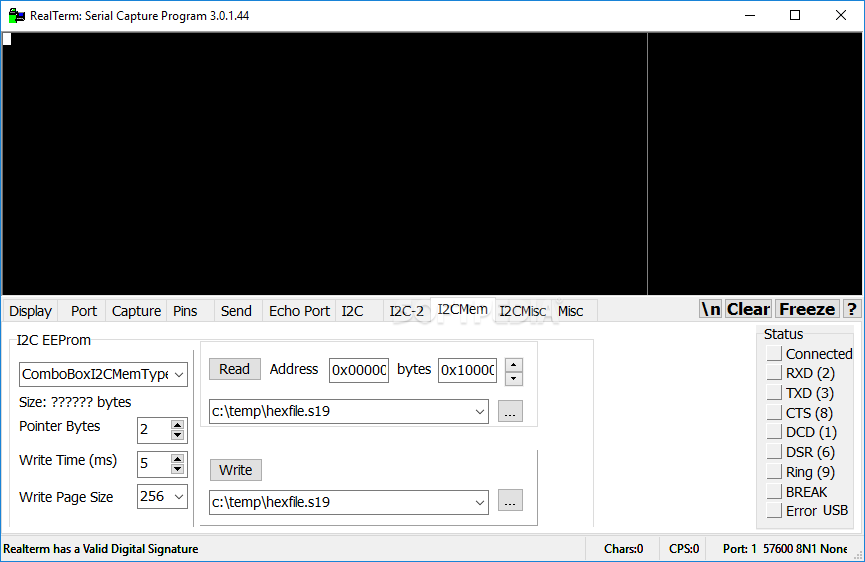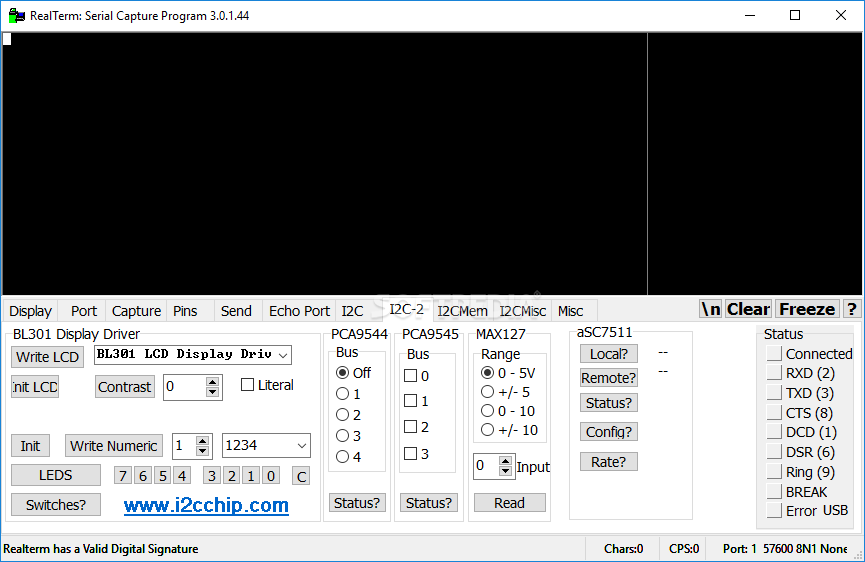

I’m going to show how to do this in RealTerm.

Now it’s time to configure your serial program. If you are using RealTerm on Windows, you’ll see a window like this pop up: Launch the serial terminal program you installed in step 1. If you are using the FTDI Friend, match the writing on the silkscreen of the FTDI Friend to the labels on the Geiger Counter – BLACK goes towards blk, GREEN towards grn.

The connector should be oriented such that the black wire is closest to the “blk” silkscreen label on the PCB, and the green wire closest to the “grn” label.

Next, connect the FTDI cable to your Geiger Counter kit, as shown. If you haven’t already, plug your USB-serial cable into a free USB port on your computer (and install the USB drivers as detailed in step 1). Step 2: Connect the USB-Serial cable to your Geiger Counter You will also want to figure out what port number or device name corresponds to your USB-serial cable. If you are using Windows 7 or Linux, you may not need to install any drivers at all – they are included with your operating system. The drivers for the FTDI cable (and FTDI Friend) are available here and instructions for installing them are here. Consult the manufacturers’ website for more information. Next, install the drivers for your USB-serial cable. If you are using Ubuntu, CuteCom is available in the Ubuntu Software Center. Instructions are included with each of the programs listed above. Install the serial terminal program for your operating system. A serial terminal program for your operating system:.You can also use the slightly less expensive FTDI Friend, also available from Adafruit.Beware, the FTDI cable works well for this but many others do not! The cable must operate with a TTL logic level ‘high’ voltage around 3V. I recommend the FTDI TTL-232R-3V3, available from many electronics suppliers, such as Adafruit Industries.A MightyOhm Geiger Counter Kit – available on this site or from one of my distributors.So, you want to log data with your Geiger Counter kit?


 0 kommentar(er)
0 kommentar(er)
